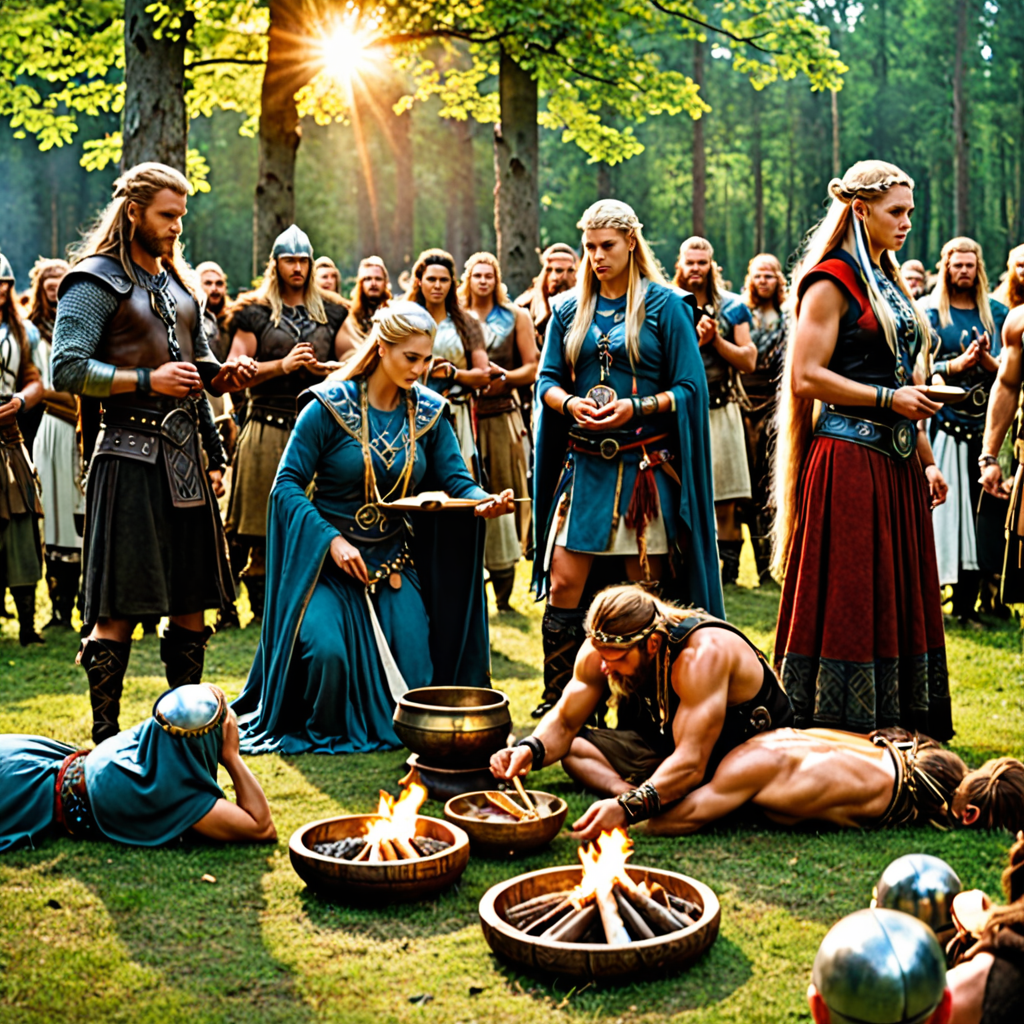The Hippogriff’s Role in Norse Warfare: A Mythological Interpretation
I. Introduction
The Hippogriff, a creature of remarkable duality, is defined in mythology as a legendary beast with the front half of an eagle and the hind half of a horse. This fascinating creature represents the union of two noble animals, embodying both strength and grace.
Norse warfare practices were deeply intertwined with mythology, where warriors often sought the favor of gods and mythical beings. Norse culture viewed battle not just as a physical confrontation, but as a spiritual and mythological engagement, with creatures playing a significant role in influencing the outcomes.
This article aims to explore the intersection of myth and warfare, focusing on the Hippogriff’s role within Norse combat and how this creature symbolizes broader themes of power, unity, and psychological warfare.
II. The Origins of the Hippogriff in Mythology
The origins of the Hippogriff can be traced back to various ancient cultures, where mythological creatures often served as symbols of human traits and societal values. The Hippogriff first emerged in literature during the Renaissance, particularly in Ludovico Ariosto’s epic poem “Orlando Furioso.” However, its roots can be connected to earlier mythological traditions that celebrated hybrid creatures.
In comparison to other mythological beings in Norse lore, such as dragons and giants, the Hippogriff stands out due to its unique combination of avian and equine characteristics. While dragons symbolize chaos and destruction, the Hippogriff represents nobility and the potential for harmony between different realms.
III. Characteristics of the Hippogriff
The Hippogriff is characterized by its majestic wings, sharp talons, and powerful equine body. These physical attributes not only signify strength but also embody a symbolic significance associated with freedom and nobility. In Norse culture, where horses were revered, the Hippogriff’s horse-like traits resonate with the values of power and loyalty.
Moreover, the Hippogriff is often depicted as a fierce protector in battle. Its mythical abilities, such as flight and agility, would have been seen as advantageous in warfare, allowing for strategic advantages over opponents. This creature symbolizes the aspiration of warriors to rise above their earthly limitations and attain greatness.
IV. The Role of Mythological Creatures in Norse Warfare
Norse culture was rich in mythological beings, including gods like Odin and Thor, and creatures like Fenrir and Jörmungandr. These beings were not merely stories; they influenced the beliefs, tactics, and morale of warriors. For the Norse, invoking the favor of a mythical creature could enhance their courage and resolve in battle.
- Significant Mythical Beings: Gods and goddesses were often called upon for strength; for example, Odin was believed to guide the souls of fallen warriors.
- Influence on Tactics: Warriors might employ strategies inspired by the characteristics of mythological creatures, such as ambush tactics akin to those of cunning beasts.
- Psychological Impact: The mere belief in these creatures could instill fear in enemies and boost the morale of Norse warriors.
V. The Hippogriff as a Symbol of Allied Forces
In the context of warfare, the Hippogriff can be interpreted as a symbol of alliances and unity. The creature’s dual nature reflects the power of collaboration among different clans or tribes in battle. It signifies the coming together of disparate forces to achieve a common goal.
Allegorically, the Hippogriff may represent a protector of the weak, embodying the ideals of chivalry and honor that were essential in Norse warrior culture. Its presence on the battlefield could symbolize the hope for victory through unity.
Historical case studies, such as the Battle of Clontarf, illustrate how mythical interpretations could influence the outcomes of significant conflicts. The belief in divine intervention and the favor of mythical creatures often motivated warriors and shaped their strategies.
VI. Historical Accounts and Artistic Representations
Literature and sagas of the Norse era often featured hippogriffs and other mythical beings, serving as a testament to their cultural significance. While not as commonly referenced as other creatures, the Hippogriff’s allegorical role can still be discerned in various texts.
Artistic depictions of the Hippogriff in Norse art often highlight its majestic and noble characteristics. These representations reflect the societal values regarding war, showcasing the admiration for bravery and the idealized qualities of warriors. The Hippogriff, with its dual nature, symbolizes the balance between ferocity and gentleness, strength and grace.
VII. Modern Interpretations and Legacy
The legacy of the Hippogriff continues to influence contemporary literature and media, appearing in works such as J.K. Rowling’s “Harry Potter” series. The creature has been reinterpreted in various forms, symbolizing freedom, strength, and the bond between different worlds.
Moreover, the role of mythology, including that of the Hippogriff, in shaping modern understandings of warfare is significant. Today, mythological narratives serve as a lens through which we examine the motivations and psychological aspects of conflict.
The Hippogriff stands as a symbol in modern cultural expressions, representing the enduring power of myth to inspire and connect across generations. Its legacy prompts reflection on the values associated with bravery, unity, and the human spirit’s quest for greatness.
VIII. Conclusion
In summary, the Hippogriff’s role in Norse warfare highlights the intricate relationship between myth and combat. This creature embodies themes of nobility, unity, and the psychological dimensions of battle, demonstrating how mythological interpretations can influence real-world events.
The enduring impact of these interpretations encourages further exploration of the dynamics between myth and warfare, revealing the profound connections that exist between cultural narratives and human behavior in times of conflict.
Future research may delve deeper into the ways in which various mythological beings have shaped not only historical warfare but also modern perceptions of conflict and power.



